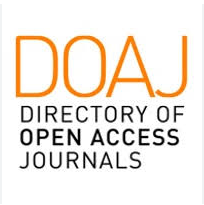K-pop 4E
Introduction of the marketing-mix of the Creative and Cultural Industry through the examples of the marketing assets used in the South Korean pop music (K-pop) and TV series (K-dramas)
Abstract
The role of the creative and cultural industry and the demand for its products and services were gradually increasing in the last decades.
In this article, the author examines the corporate marketing assets, which enabled this growth, through the sector of the South Korean music and cinema, which popularity is gaining more popularity.
Using the model of the 4E marketing-mix (Experience, Everyplace, Exchange, Evangelism), describes those assets which are used by the companies to influence the consumption of the products of this sectors.
The second part of the article describes the consumer attributes and preferences of this sector through the results of an international secondary research and a Hungarian primary research implemented in 2018 and 2019.
References
BALMAIN, C. (2014): An investigation into the popularity of Hallyu culture in the UK. (2014): 81-88. in Anderson, Crystal S., et al. The global impact of South Korean popular culture: Hallyu unbound. Lexington books, 2014.
BAYER, J. (2002): Globális média, globális kultúra. Globalizáció és civilizációk. Magyar Tudomány 47: 748-761.
BERG, S.-H. (2015): Creative cluster evolution: The case of the film and TV industries in Seoul, South Korea. European Planning Studies 23(10): 1993-2008. https://doi.org/10.1080/09654313.2014.946645
BERG, S.-H. (2018): Local buzz, global pipelines and Hallyu: The case of the film and TV industry in South Korea. Journal of Entrepreneurship and Innovation in Emerging Economies 4(1): 33-52. https://doi.org/10.1177%2F2393957517749072
BOK-RAE, K. (2015): Past, present and future of Hallyu (Korean Wave). American International Journal of Contemporary Research 5(5): 154-160.
CHANG, W. & PARK S.-E. (2019): The fandom of Hallyu, a tribe in the digital network era: The Case of A.R.M.Y. of BTS. Kritika Kultura 32, 261-287
CHO, J. K. (2017): Sure It's Foreign Music, but It's Not Foreign to Me Understanding K-Pop's Popularity in the U.S. Using Q Sort. All Theses and Dissertations. 6612, letöltve: https://scholarsarchive.byu.edu/etd/6612, 2020. 05.12.
CHO, M. (2017): Domestic Hallyu: K-Pop Metatexts and the Media's Self-Reflexive Gesture. International Journal of Communication (19328036) 11.
CHOI, S. C., MEZA X.V. & PARK, H.W. (2014): South Korean culture goes Latin America: social network analysis of Kpop tweets in Mexico. International Journal of Contents 10(1): 36-42.
CONNELL, S. (2014): Building a creative economy in South Korea: Analyzing the plans and possibilities for new economic growth. 2014: On Korea 7., letöltve: http://www.keia.org/sites/default/files/publications/kei_creative_economy.pdf, 2019. 12.20.
COMUNIAN, R., CHAPAIN, C., & CLIFTON, N. (2010): Location, location, location: exploring the complex relationship between creative industries and place. Creative Industries Journal, 3(1), 5-10.
DE CASTILHO, V. B. (2015): South Korean Pop Style: The Main Aspects of Manifestation of Hallyu in South America. Romanian Journal of Sociological Studies (2): 149-176.
DESCHENES, B. (1998): Toward an anthropology of music listening, International Review of the Aesthetics and Sociology of Music, 135-153. https://doi.org/10.2307/3108385
EC (2010): Zöld könyv a kulturális és kreatív iparágak potenciáljának felszabadításáról. Brüsszel. letöltve: http://eur-lex.europa.eu/legal-content/EN/ALL/?uri=CELEX:52010DC0183, 2019.04.26.
EPURAN G., IVASCIUC, S. I. & MICU A. (2015): From 4P's to 4 E's–How to Avoid the Risk of Unbalancing the Marketing Mix in Today Hotel Businesses., Annals of “Dunarea de Jos” University of Galati Fascicle I. Economics and Applied Informatics Years XXI – no 2/2015
ERCSEY, I. (2014): Közös az értékteremtés a kulturális szektorban? Marketing Menedzsment 48 (3): 36-46.
FLODMAN, S. (2015): How to Use Social Media as a Nordic Music Company Inspired by the Kpop Business, szakdolgozat, KTH program; Media Technology, Master of Science in Media Technology – Media Management, KTH Royal Institute of Technology , School of Computer Science and Communication, letöltve: https://www.diva-portal.org/smash/get/diva2:824154/FULLTEXT01.pdf, 2019.11.20.
FUHR, M. (2015): Globalization and popular music in South Korea: Sounding out K-pop, Routledge.
HONG E. (2014): The Birth of Korean Cool, How One Nation is Conquering the World Through Pop-Culture. New York: Picador.
HORVÁTH, Á. & GYENGE B. (2019): A filmes merchandising megjelenési formáinak, alkalmazhatóságának és történetének irodalmi vizsgálata." Marketing Menedzsment 53 (Különszám): 69-76.
HUH, C. & Wu, J. (2017): Do Hallyu (Korean Wave) exports promote Korea’s consumer goods exports? Emerging Markets Finance and Trade 53(6): 1388-1404. https://doi.org/10.1080/1540496X.2017.1313161
HÜBINETTE, T. (2012): The reception and consumption of Hallyu in Sweden: Preliminary findings and reflections. Korea Observer 43(3): 503-525.
HÜBINETTE, T. (2018): Who Are the Swedish K-pop Fans? Revisiting the Reception and Consumption of Hallyu in Post-Gangnam Style Sweden with an Emphasis on K-Pop. Culture and Empathy. International Journal of Sociology, Psychology, and Cultural Studies 1(1-4): 34-48. https://doi.org/10.32860/26356619/2018/1.1234.0004
JIN, D. Y. & YOON, K. (2016): The social mediascape of transnational Korean pop culture: Hallyu 2.0 as spreadable media practice. New media & society 18(7): 1277-1292. https://doi.org/10.1177%2F1461444814554895
JIN, D. Y (2018): An analysis of the Korean wave as transnational popular culture: North American youth engage through social media as TV becomes obsolete. International Journal of Communication 12: 404-422.
JUNG, S. & SHIM D. (2014): Social distribution: K-pop fan practices in Indonesia and the ‘Gangnam Style’phenomenon. International Journal of Cultural Studies 17(5): 485-501. https://doi.org/10.1177%2F1367877913505173
KORPÁS, Z. & SZABÓ B. (2019): Az online reklámok közvetlen hatásának vizsgálata a vásárlási döntésekre. Marketing & Menedzsment 53 (2): 31-44.
KOTLER, P., KARTAJAYA, H. & SETIAWAN, I., (2010). Marketing 3.0: From products to customers to the human spirit. Hoboken, NJ: Wiley Wiley InterScience (Online service).
KWON, S.-H. & KIM, J. (2013): From censorship to active support: The Korean state and Korea’s cultural industries. The Economic and Labour Relations Review 24 (4): 517-532. https://doi.org/10.1177%2F1035304613508873
LEE, S. Y. (2020): Practicing K-pop: A New Religion called BTS and A.R.M.Y., Princeton Theological Seminary, konferencia előadás, BTS (방탄소년단), A Global Interdisciplinary Conference Project, Kingston University, Penryn Road, London, 4-5 January 2020
LEUNG, S. (2012): Catching the K-Pop Wave: Globality in the Production, Distribution, and Consumption of South Korean Popular Music, Senior Capstone Projects. 149. http://digitalwindow.vassar.edu/senior_capstone/149 (letöltve: 2020.12.15.)
MADRID-MORALES, D. & LOVRIC, B. (2015): Transatlantic connection’: K-pop and K-drama fandom in Spain and Latin America. The Journal of Fandom Studies 3(1): 23-41.
MIN, W., JIN, D.Y. & HAN, B. (2018): Transcultural fandom of the Korean Wave in Latin America: through the lens of cultural intimacy and affinity space. Media, Culture Society: 0163443718799403. (hivatkozva Molnarra (2014) https://doi.org/10.1177%2F0163443718799403
MORVAY, Sz. (2020): Kultúra és a városfejlődés – kreatív városok Kelet-Közép-Európában, doktori értekezés, Széchenyi István Egyetem, Regionális- és Gazdaságtudományi Doktori Iskola, letöltve: https://rgdi.sze.hu/images/RGDI/honlapelemei/fokozatszerzesi_anyagok/Doktori%20%C3%A9rtez%C3%A9s_Morvay%20Szabolcs.pdf, 2021.01.16.
NESZMÉLYI, Gy. (2020): A koreai köztársaság kereskedelmi politikája és a koreu szabadkereskedelmi megállapodás. Földrajzi Közlemények 144 (3): 274-293. https://doi.org/10.32643/fk.144.3.3
OH, I. & PARK G.-S. (2012). From B2C to B2B: Selling Korean pop music in the age of new social media. Korea Observer 43(3): 365-397.
ONO, K. A. & KWON, J. (2013): Re-worlding culture. The Korean Wave: Korean Media Go Global. London: Routledge, 199-214.
POWELL, R. R. (2020): The Religion of BTS, Episcopal Chaplain at Harvard University, konferencia előadás, BTS (방탄소년단), A Global Interdisciplinary Conference Project, Kingston University, Penryn Road, London, 4-5 January 2020
POWER D. & NIELSÉN T. (2010): Priority Sector Report: Creative and Cultural Industries, European Cluster Observatory, letöltve: 2019.088.14., 16:30, http://www.clusterobservatory.eu/common/galleries/downloads/CreativeAndCulturalIndustries.pdf
SHIM, D. (2002): South Korean media industry in the 1990s and the economic crisis. Prometheus, 20(4), 337-350.
SHIM, D. (2006): Hybridity and the rise of Korean popular culture in Asia. Media, Culture Society 28 (1): 25-44. Sinnreich, A. (2007). Henry Jenkins: Convergence Culture: Where Old and New Media Collide. International Journal of Communication, 1(1), 4.
SHIM, D. (2008): The growth of Korean cultural industries and the Korean wave. East Asian pop culture: Analysing the Korean wave, 1, 15-32.
SHIN, S. I. & Kim, L. (2013): Organizing K-pop: Emergence and market making of large Korean entertainment houses, 1980–2010. East Asia, 30(4), 255-272.
SINNREICH, A. (2007): Henry Jenkins: Convergence Culture: Where Old and New Media Collide. International Journal of Communication, 1(1), 4.
SUNG, S.-Y. (2014). K-pop reception and participatory fan culture in Austria. Cross-Currents: East Asian History and Culture Review 3 (1): 56-71.
SZILÁGYI, A. (2015): Az intelligens szakosodás és a kreatív iparágak kapcsolata. Multidiszciplináris kihívások, sokszínű válaszok, 1, 103-115.
TÓTH, O. (2016): A kultúramarketing hazai és nemzetközi jelentősége, különös tekintettel a kulturális turizmus gazdaságélénkítő szerepére. Marketingkaleidoszkóp 2016 (Prof. Dr. Piskóti István ed.): 176.
TÖRNKVIST, G. (1983): Creativity and the renewal of regional life in Buttimer A. (ed.): Creativity and Context: A seminar report. Land studies in geography, B. Human Geography, 50. Gleerup, Lund, pp. 91-112
UNCTAD (2018): Creative Economy Outlook, Trends in international trade in creative industries 2002-2015, country profiles, 2005-2014, UNCTAD/DITC/TED/2018/3, letöltve: 2019.08.14., 17:10, https://unctad.org/en/PublicationsLibrary/ditcted2018d3_en.pdf
YOUNG, K. H. (2020): Beyond The Standards: A Study on the Absolute Freedom of Individuals in the Message of BTS through the Idea of Laozi and Zhuangzi, Suwon Science College in Korea, konferencia előadás, BTS (방탄소년단), A Global Interdisciplinary Conference Project, Kingston University, Penryn Road, London, 4-5 January 2020
UM, H. (2019): BTS and K-pop in the UK: Global Success and UK Reception. A report commissioned by the Korean Cultural Centre, UK.
Az UNCTAD éves kereskedelmi jelentéseiben a kultúrával kapcsolatos szolgáltatásokat (személyes, kulturális és rekreációs szolgáltatások néven) tűnteti fel külön kategóriaként.
A K-pop több, mint popzene, hiszen többféle zenei stílust foglal magába (gyakran egy zenei számon belül). A K-pop stílusba tartozhatnak a pop, a hip-hop, a rap, a rock, az R&B és az elektronikus zenék is, melyek közös ismertetőjele a dél-koreai eredet (Leung,2012)
https://www.ifpi.org/our-industry/global-charts/
https://www.billboard.com/music/bts/chart-history
https://www.youtube.com/watch?v=XsX3ATc3FbA
https://www.youtube.com/watch?v=MBdVXkSdhwU&feature=emb_logo
https://www.statista.com/statistics/831717/south-korea-film-industry-sales-revenue/
https://bizdevonline.com/four-es-marketing-strategy/; Fetherstonhaugh, B. (2009), The 4P’s are out, the 4E’s are in, http://www.ogilvy.com/on-our-minds/articles/the_4e_-are_in.aspx
https://www.kocca.kr/en/main.do
http://www.korea.net/AboutKorea/Economy/Industrial-Brand-Leaders-Korean-Industrial
https://www.youtube.com/playlist?list=PLpHoQcgaTCLInk5Yb-W4dLldhhL8wFYv7
https://www.soompi.com/category/quizzes
https://www.facebook.com/events/324398458281283/
https://www.mylondon.news/whats-on/music-nightlife-news/bts-ticket-prices-revealed-wembley-15900736
https://www.youtube.com/watch?v=2oTIlGcsRf8
https://campaign.weverseshop.io/nyel/#ticket
https://edition.cnn.com/2020/06/08/entertainment/bts-A.R.M.Y.-black-lives-donation/index.html
https://www.bbc.com/news/world-asia-52996705
https://www.kingston.ac.uk/events/item/3428/04-jan-2020-bts-a-global-interdisciplinary-conference-project/. A konferencián a cikk szerzője szekcióvezetőként és előadóként is részt vett.
https://bt21fans.com/products/bts-x-2018-official-A.R.M.Y.-bomb-ver-3-light-stick; https://www.youtube.com/watch?v=0xorUCuvpKY
https://www.youtube.com/watch?v=ZhJ-LAQ6e_Y; https://www.unicef.org/press-releases/we-have-learned-love-ourselves-so-now-i-urge-you-speak-yourself


























